To study the working of Scaling with Parameters (SCP) Instruction in Allen Bradley programmable logic controllers (PLC).
Scaling with Parameters (SCP) Instruction
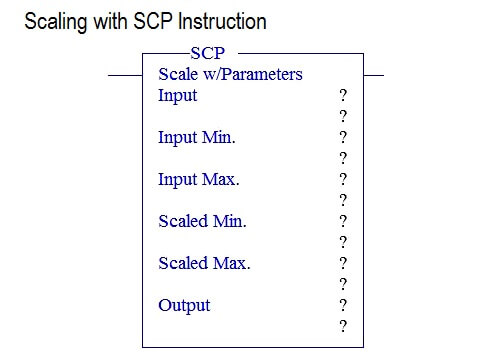
Block Name: SCP – Scaling with parameters
In the above picture, there are totally six parameter ,
Input
Integer Value address-From Field instrument which is to be scaled
Input Minimum
Minimum Input value (Ex: 4 to 20 mA from level transmitter means 4 mA is the input minimum value)
Input Maximum
Maximum Input value (Ex: 4 to 20 mA from level transmitter means 20 mA is the input maximum value)
Scaled Minimum
Minimum scale value (0 to 32767 is the maximum positive acceptable number in AB PLC-Minimum Scaled value is 0)
Scaled Maximum
Maximum scale value (0 to 32767 is the maximum positive acceptable number in AB PLC-Maximum Scaled value is 32767).
Function of SCP :
The Input value is scaled to a range determined by creating a linear relationship between input min and max values and scaled min and max values. The scaled result is returned to the address indicated by the output parameter.
Parameters may be integer, long, floating-point or immediate data values or addresses containing values. The Input value is scaled to a range determined by creating a linear relationship between input min and max values and scaled min and max values.
The scaled result is returned to the address indicated by the output parameter.
Program Logic :
Let s study the working with simple example,
Get the level of the water from level transmitter (4 to 20mA),
Give the notification
If level transmitter become faulty,
If level transmitter range between 4 to 8 mA, give the notification as water level low
If level transmitter range between 16 to 20 mA, give the notification as water level high.
If level transmitter reaches 20mA, give the notification to stop motor.
PLC Program :
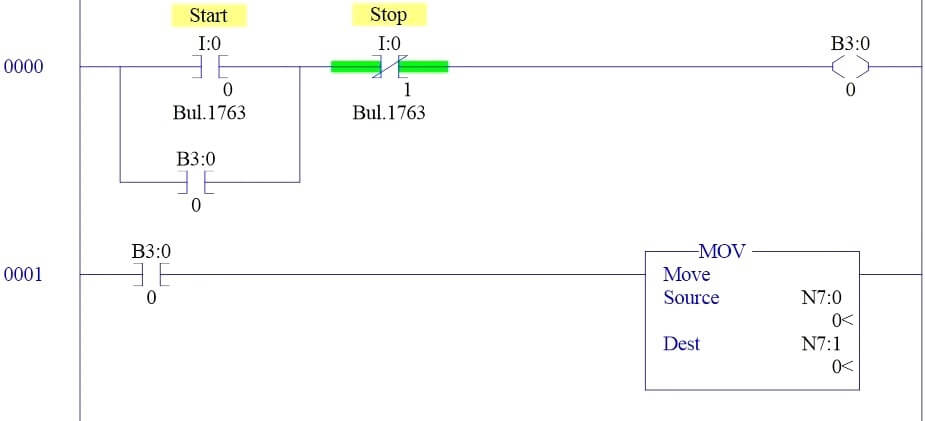
Rung 0000 :
Start/Stop PB latched with memory.
Rung 0001 :
When Start is pressed move the value stored in N7:0 to N7:1
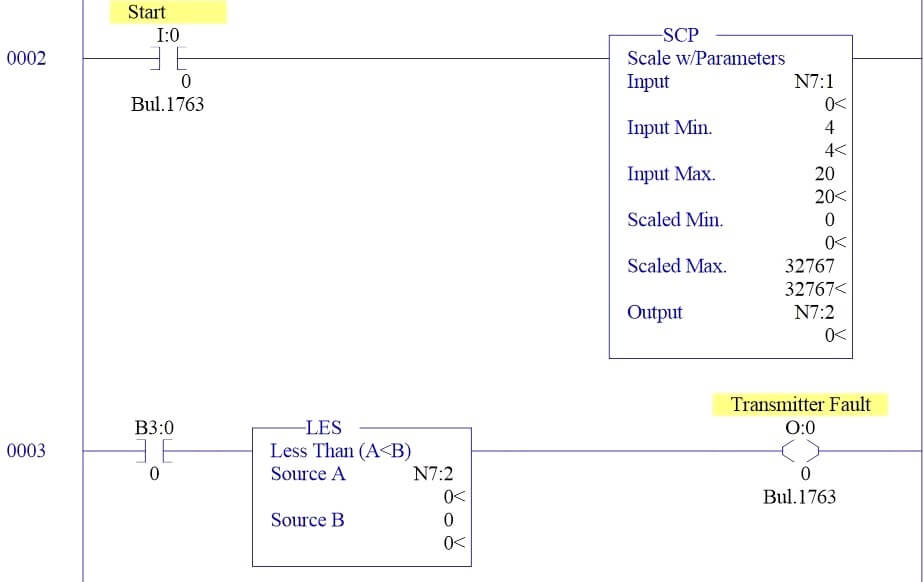
Rung 0002 :
Scaling block is used to scale the input to PLC value.(4mA -0 /20mA-32767)
Rung 0003 :
Level transmitter is configured to give 4mA when tank level is zero, if transmitter gives 0 instead of 4mA it means transmitter is faulty. Comparator block is used to compare and give notification to any one of the digital output like lamp.
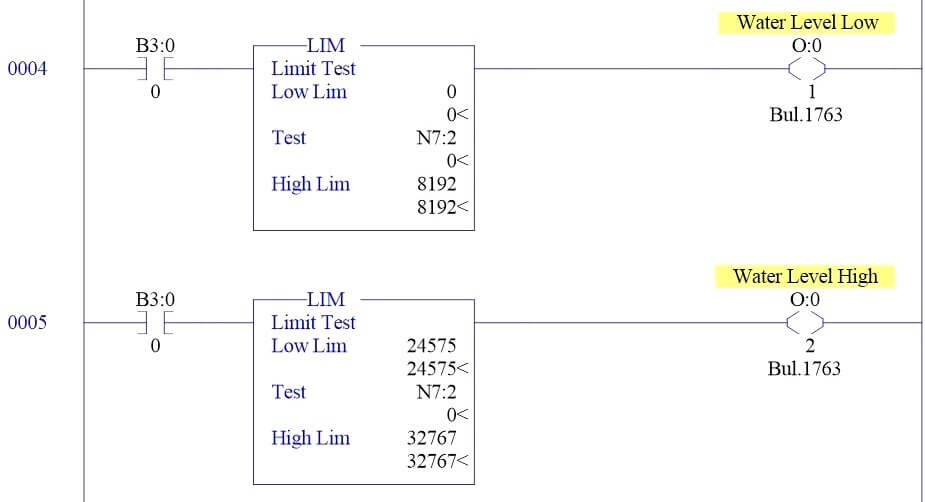
Rung 0004 :
Limit block is used to range the values between 4 to 8mA, and give the notification as water level is low.
Rung 0005 :
Limit block is used to range the values between 16mA to 20mA, and give the notification as water level is high.

Rung 0006 :
Comparator block is used to compare the high end value and give the notification to turn stop motor.
Example PLC Logic with SCP Instruction
When Level Transmitter gives 0 mA (N7:1)
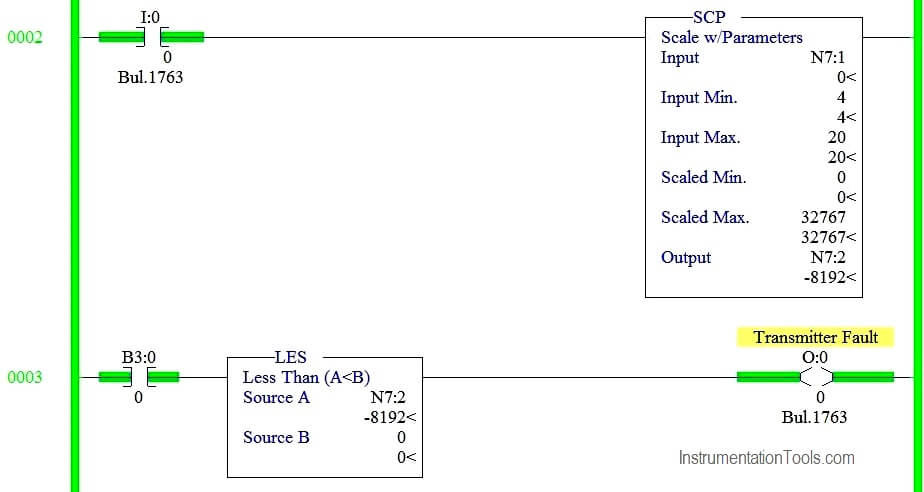
When Level Transmitter gives 7 mA (N7:1)
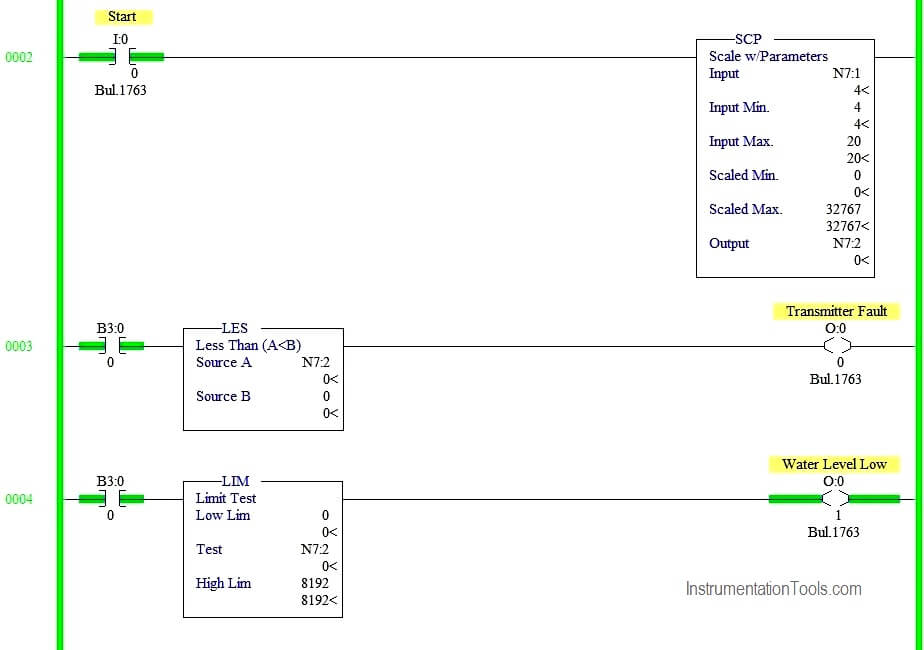
When Level Transmitter gives 18 mA (N7:1)
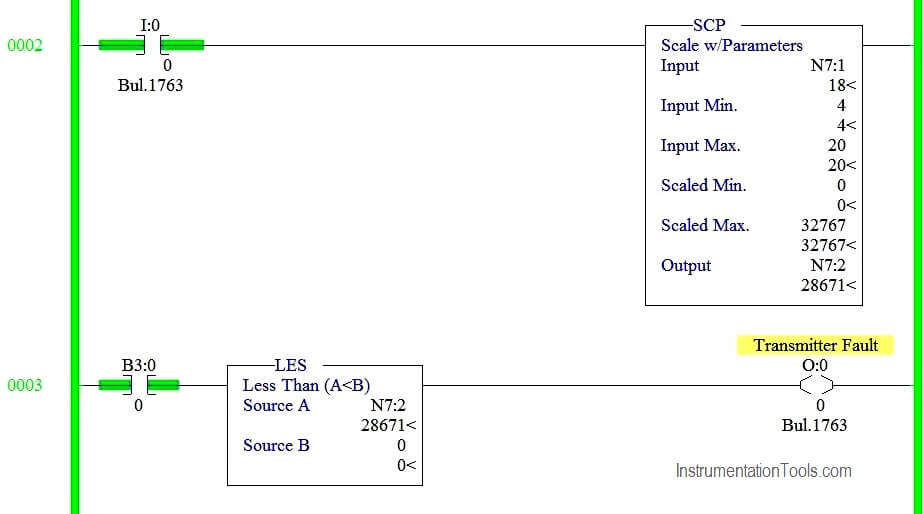
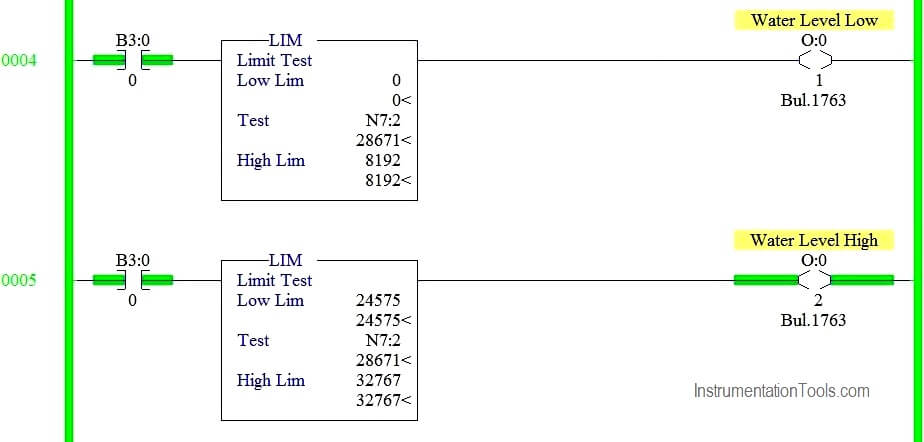
When Level Transmitter gives 20 mA (N7:1)
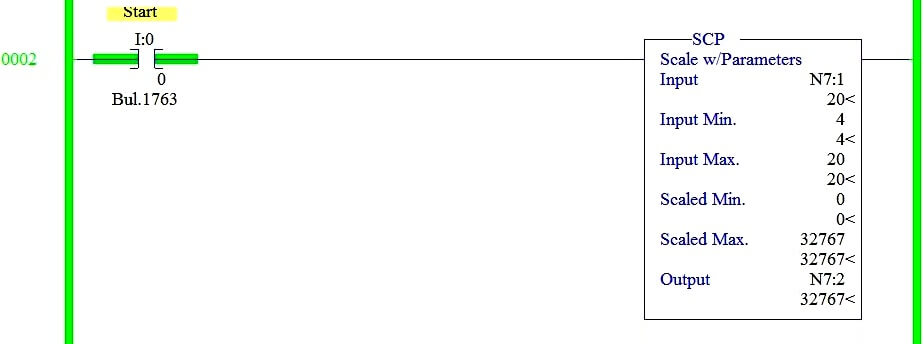
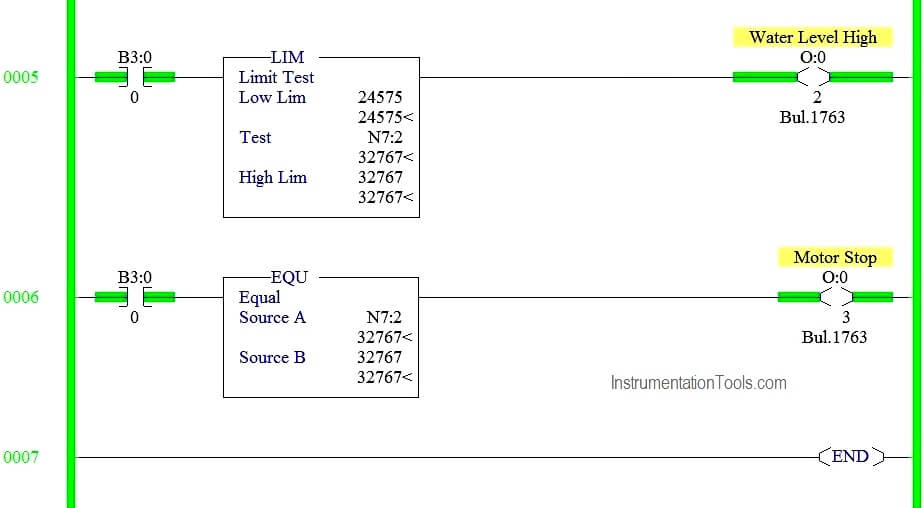
Conclusion:
We can use this example to understand the working scaling block in AB PLC.
If you liked this article, then please subscribe to our YouTube Channel for PLC and SCADA video tutorials.
You can also follow us on Facebook and Twitter to receive daily updates.
Read Next:
Single Push button Ladder Logic
Masked Move Instruction in PLC
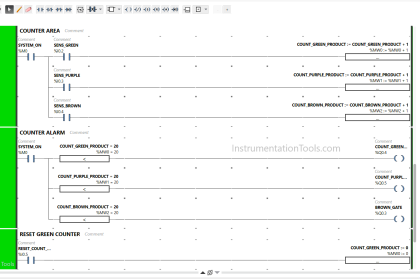
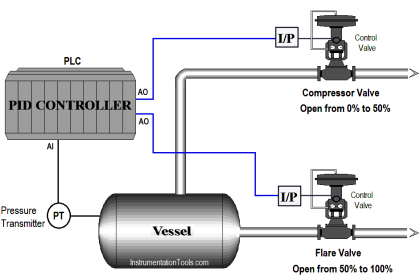

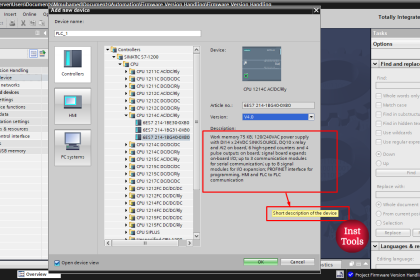
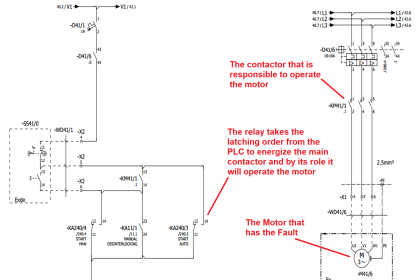
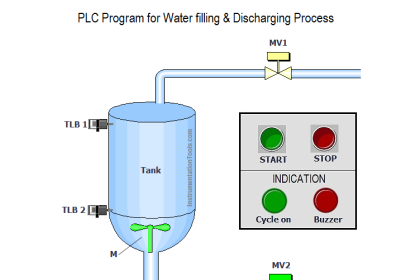
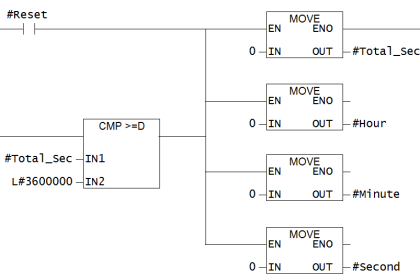
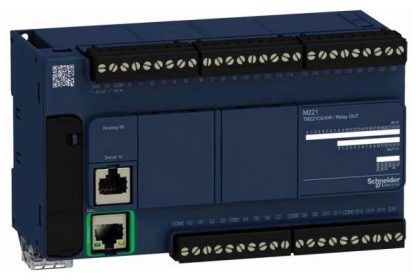
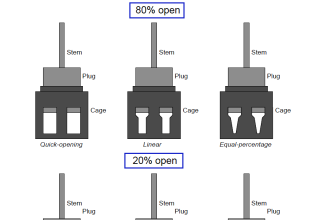

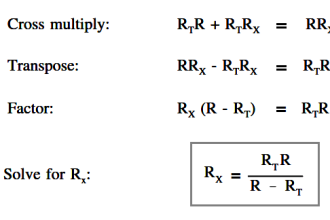
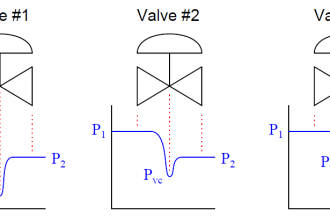

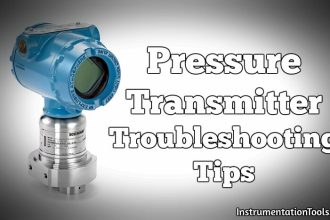
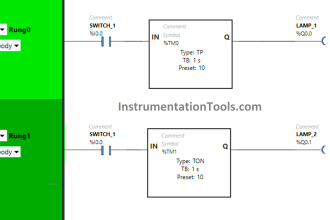
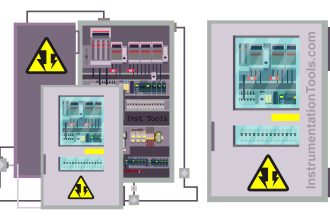

the SPC function is an advanced level instruction in programming .. I would like posts to turn signal 4 to 20 mA through that instruction
NO RETURN TO MY QUESTION. I FOLLOW THIS PAGE FOR A LONG TIME.
Hema Sundaresan CAN ANSWER ME PLEASE!
Hello Jairo Francisco,
I am really sorry for the late response.
That part will be in output scaling part,where you can turn 32767 to 20mA and 0 to 4 mA.
Thank you very much Hemalatha Sundaresan !! you could create more examples that work with signal 4 to 20 ma using the AB PLC.
I am using this example on a temperature transmitter.cc
How I can implement level control in VBA excel?